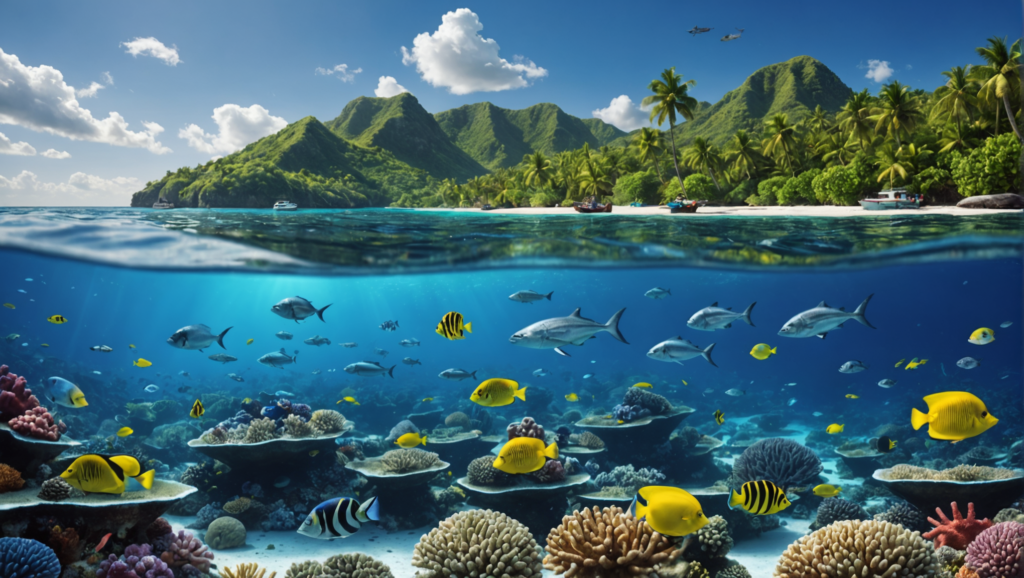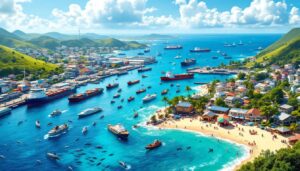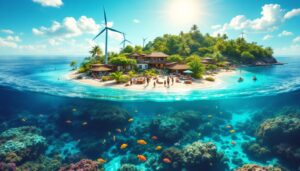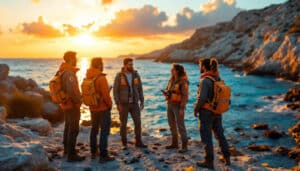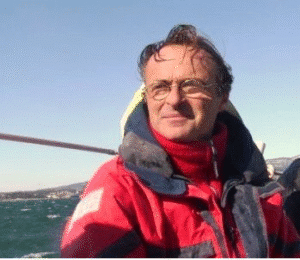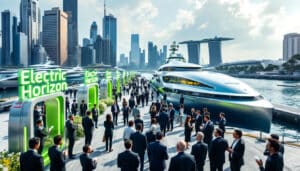While the oceans cover more than 70% of our planet and are home to essential biodiversity, the blue economy emerges as an innovative response to contemporary maritime challenges. This concept focuses on the exploitation hard And sustainable marine resources, while ensuring the health of ocean ecosystems is preserved. By integrating practices such as sustainable fishing and theinnovative aquaculture, the blue economy stands as a creator of value, combining economic growth and environmental protection.
The challenges are multiple: sustainable development, fight against climate change and renewal of natural resources. The United Nations 2030 Agenda calls for enhanced international cooperation to implement integrated maritime policies. At the same time, the opportunities generated by this economic model are vast, ranging from technological innovation to investments in modern maritime infrastructure. Understanding the complexities of the blue economy means understanding how responsible management of the seas can contribute to a sustainable future for generations to come.
L’blue economy encompasses all economic activities linked to our oceans, seas and coastal areas. It is defined by a use sustainable marine resources, working towards development that preserves both the environment and economic prosperity. By integrating responsible and innovative practices, the blue economy inspires a transformation of marine sectors which can contribute to solving several global issues, such as food safety, there protection of biodiversity, and the fight against climate change.
Table of Contents
ToggleThe major challenges of the blue economy
The oceans, which cover more than 70% of the earth’s surface, play a crucial role in our ecosystem and our economy. Around 3 billion people directly depend on marine resources for their daily livelihoods. Therefore, the health of the seas is fundamental to global food security. According to a recent FAO study, the oceans provide nearly 20% of the animal proteins consumed by humanity. However, this approval faces renewed challenges, such as the overfishing, there pollution and the climate change.
Overfishing therefore represents a major challenge. Currently, around a third of fish stocks are exploited to their maximum capacity or overexploited. This situation threatens marine biodiversity and the balance of ocean ecosystems. Proper resource management can offer solutions. L’sustainable aquaculture, for example, presents itself as a viable alternative to overfishing. The latter not only helps meet the demand for seafood, but it also protects wild stocks. A study has shown that implementing responsible aquaculture techniques could reduce the environmental impact of marine food production by up to 50%.
Opportunities and innovations in the blue economy
Faced with these challenges, the blue economy offers a multitude ofopportunities. By the use of innovative technologies, it is possible to transform our traditional approaches to marine exploitation. For example, maritime renewable energies, such astidal energy and theoffshore wind energy, are gaining momentum. According to the, offshore wind power capacity could reach 2340 GW by 2040.
There marine biotechnology also represents a booming sector. It stimulates research on marine organisms and their applications in various fields, ranging from medicine to cosmetics. For example, certain marine species are recognized for their anti-inflammatory or antibacterial properties, providing opportunities to develop natural health products. This little-explored potential encourages industries to rethink their research and development methods.
Furthermore, the creation ofmarine protected areas is essential to promote the regeneration of ecosystems. It is estimated that these areas, which currently represent only 7% of the oceans, could triple by 2030 if adequate policies are implemented. Marine protected areas help restore biodiversity, replenish fish stocks and strengthen the resilience of ecosystems to human pressures.
Practical strategies for a sustainable blue economy
To get the most out of the blue economy, it is crucial to adopt strategies pragmatic and inclusive. Here are some practical recommendations that could enable a good approach:
- Awareness and education : Raising the level of awareness among the general public and professionals about the benefits of the blue economy is essential. This can be done through educational programs on the sustainable management of marine resources.
- Multi-sector collaboration : Engagement between governments, businesses and local communities is essential. Creating public-private partnerships can catalyze sustainable maritime innovations.
- Integration of start-ups : New businesses integrating innovative solutions into the blue economy should receive increased support. Start-ups help to energize the sector through their innovative ideas, agility and ability to solve complex challenges.
- Regulatory reforms : The implementation of regulations favorable to the sustainability and resilience of the oceans constitutes a fundamental pillar. There is a need to reassess and strengthen fisheries, aquaculture and conservation policies.
- Investment in research : Funding research into new sustainable methods and the impact of human activities on the oceans will strengthen the knowledge needed for effective management.
The challenges and opportunities presented by the blue economy are undeniable. The intersection of technology and marine sustainability paves the way for a future where oceans and coastal communities can thrive simultaneously. Successful initiatives, well-designed policies and collective commitment are the foundation of an ambitious transformation towards real marine sustainability.
To deepen your understanding of the blue economy and explore real-world cases, you can consult resources such as Blue Plan, L’UN on the blue economy, And The Blue Eco.
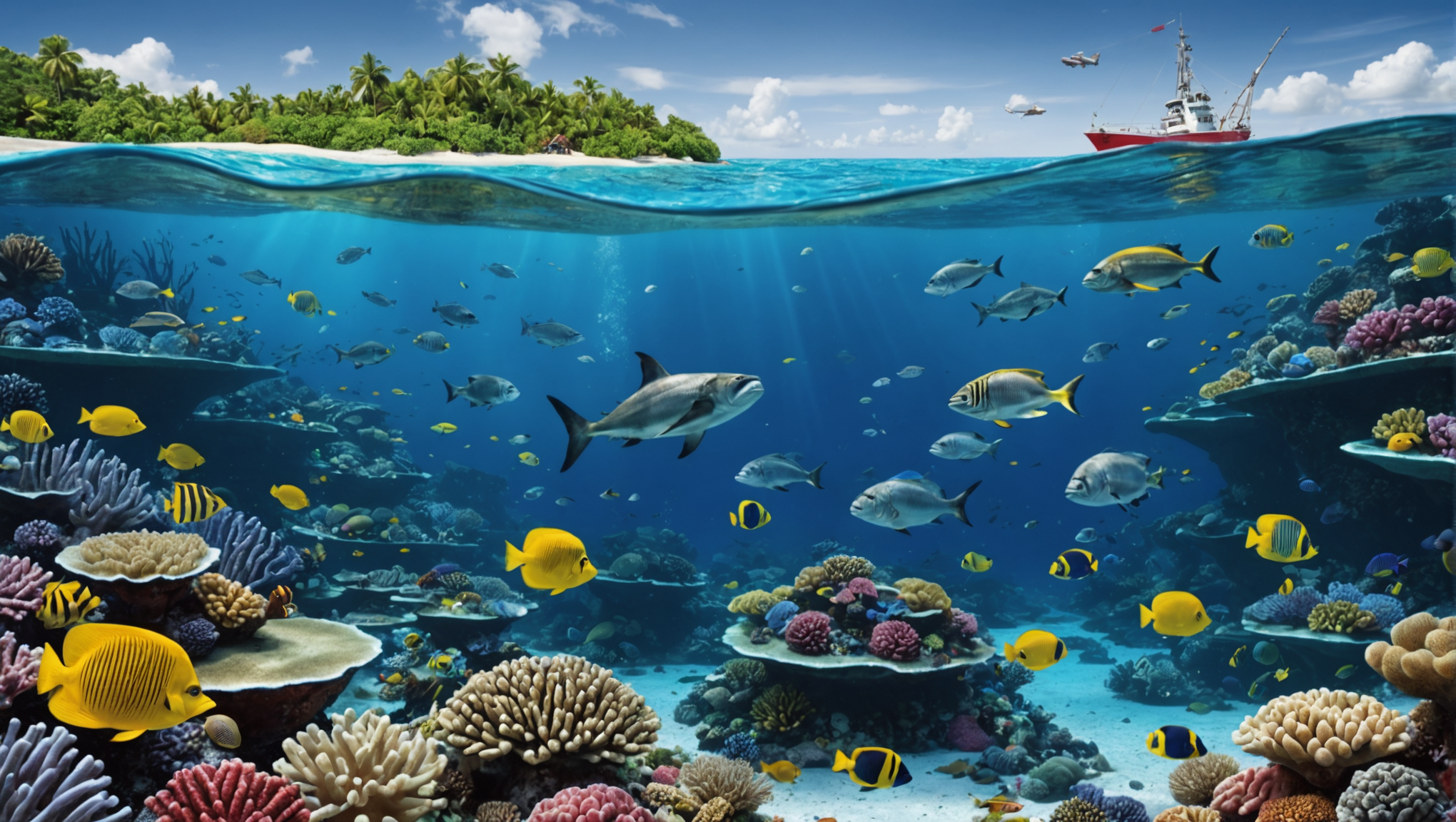
Blue Economy FAQ: Challenges and Opportunities for Marine Sustainability
What is the blue economy? The blue economy refers to an economic model that promotes marine resources while ensuring their sustainability, encompassing activities such as fishing, aquaculture and maritime tourism while respecting the environment.
What are the main challenges of the blue economy? Key issues include the need to protect marine biodiversity, combat ocean pollution, and promote economic development that is both sustainable and inclusive.
How can the blue economy contribute to marine sustainability? The blue economy can contribute to marine sustainability by promoting sustainable fishing and aquaculture practices, creating marine protected areas and encouraging innovation in environmentally friendly marine technologies.
What role do European policies play in the blue economy? European policies, notably through the Blue Book, aim to integrate maritime and economic issues to promote a holistic approach to marine sustainability and resource management.
What economic opportunities can the blue economy offer? The blue economy offers opportunities in terms of job creation in sustainable sectors, development of new marine technologies, and attraction of investments towards environmentally friendly projects.
How does climate change impact the blue economy? Climate change affects marine ecosystems, which has consequences for biodiversity, fisheries resources and the ability of coastal communities to maintain their livelihoods, requiring adaptation of economic practices.
How is the blue economy essential for the 2030 Agenda? The blue economy is essential for the 2030 Agenda as it contributes to achieving several Sustainable Development Goals (SDGs) related to aquatic life, poverty, innovation and economic sustainability.
What are the key innovations linked to the blue economy? Key innovations include sustainable fishing technologies, smart aquaculture systems, and marine biotechnology-based solutions aimed at preserving ocean resources.
How can we promote sustainable growth through the blue economy? To promote sustainable growth, it is crucial to encourage education and awareness on sustainable maritime practices, invest in green infrastructure and support communities in the transition to sustainable economic models.

